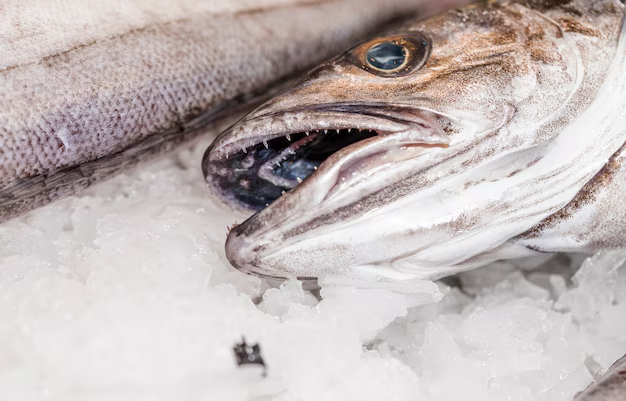How Long Does Fresh Salmon Last in Your Fridge?
There’s nothing quite like buying a fresh piece of salmon and planning a delicious meal around it. But as you stand at the seafood counter, you might wonder: How long can I really keep this in my fridge before it goes bad? Keeping fresh salmon fresh while maximizing its shelf life is crucial for maintaining both taste and safety. Let's dive into everything you need to know about storing salmon in your refrigerator.
🐟 Understanding Fresh Salmon Shelf Life
What Determines Salmon's Freshness?
How long salmon remains fresh can be influenced by several factors, including:
- The initial freshness at purchase: Salmon caught and processed quickly maintains its quality longer.
- Storage techniques: Proper techniques can extend shelf life.
- Refrigerator conditions: An adequately cold fridge is essential.
General Guidelines
Typically, fresh salmon should be consumed within 1 to 2 days when stored correctly in the refrigerator. Keeping it longer increases the chance of spoilage. While it may last a bit longer under ideal conditions, it's essential to remain cautious to avoid foodborne illnesses.
🧊 Best Practices for Storing Fresh Salmon
Ideal Storage Conditions
To keep your salmon fresh:
- Keep it Cold: Store salmon at the coldest part of your refrigerator, ideally at a temperature below 40°F (4°C).
- Seal Properly: Wrap the salmon in airtight packaging to reduce exposure to air, which can hasten spoilage.
- Avoid Cross-Contamination: Store the salmon on a separate shelf away from other foods to prevent contamination.
Safety Tips
- Smell and Appearance: Fresh salmon should smell like the ocean, not fishy. Its flesh should be firm, not slimy.
- Consume Quickly: Even when stored appropriately, try to consume fresh salmon sooner rather than later for the best taste and safety.
⏳ Extending the Shelf Life of Salmon
Freezing for Longevity
If you don't plan to consume your salmon within two days, freezing is a viable method to extend its longevity.
- Wrap It Right: Before freezing, wrap the salmon tightly in plastic wrap and aluminum foil or place it in a vacuum-sealed bag. This helps prevent freezer burn.
- Label Clearly: Mark the date you froze the salmon to keep track of its storage duration. Frozen salmon remains safe indefinitely, but its quality is best within 2 to 3 months.
Cooking and Repurposing Options
Consider cooking your salmon if it's nearing the end of its refrigerated shelf life. Cooked salmon can be stored in the refrigerator for an additional 3 to 4 days or refrozen.
🍽️ Ensuring Quality: Tips for Buying Fresh Salmon
Ensuring the freshness of your salmon begins at the purchasing stage:
- Check the Flesh: Fresh salmon is bright and vibrant in color with an even tone.
- Look for Moisture: The surface should be moist, not dry.
- Inspect the Skin: It should be shiny and metallic, indicating freshness.
- Consider the Smell: It should have a mild ocean scent, without any overpowering fishy odor.
Key Takeaways for Buying
- Ask your fishmonger for the catch date.
- Always buy from reputable sources with high turnover to ensure you're getting the freshest product.
📝 Quick Storage Summary
Here’s a handy chart to help you recall how to store salmon:
| Storage Method | Guidelines | Estimated Shelf Life |
|---|---|---|
| Refrigerator (<40°F/4°C) | Use airtight packaging | 1-2 days |
| Freezer | Vacuum-seal or wrap tightly | Best within 2-3 months |
| Cooked Salmon | Refrigerate promptly | 3-4 days |
❓ Common Questions About Salmon Storage
Can You Refreeze Salmon?
While it's safe to refreeze salmon, quality may decrease each time it's thawed and refrozen. To maintain quality, thaw and freeze only as necessary.
What About Smoked Salmon?
Smoked salmon typically has a longer shelf life due to the curing process. However, always check the packaging for specific use-by dates, and refrigerate it after opening.
Signs of Spoilage
Always be on the lookout for these spoilage indicators:
- Unpleasant Odor: A strong, sour smell indicates spoilage.
- Color Changes: Dull or grayish hues may signal that it's past its prime.
- Texture Changes: A slimy or sticky film is a sign it's time to toss the salmon.
🔄 Related Considerations
Environmental Impact
When purchasing salmon, consider environmentally sustainable options. Wild-caught and responsibly farmed salmon ensure that you're supporting sustainable fishing practices, contributing to ocean conservation.
Alternative Preservation Methods
For those interested in long-term storage beyond freezing, consider canning or curing your salmon at home. These methods can extend shelf life while offering unique flavors.
Wrapping Up
Storing fresh salmon properly enhances both its taste and safety, ensuring every bite is as delicious as the day you bought it. By following these guidelines, you’ll enjoy fresh salmon in all its glory, while minimizing waste and maximizing flavor. Whether you're savoring it fresh or saving it for later, you're now equipped to make the most of your salmon purchase.
Remember, when in doubt, trust your senses—a fresh piece of salmon always tells the story of its quality. Whether you’re planning to grill, bake, or smoke your catch, understanding its shelf life is crucial. Enjoy your meal, and perhaps try experimenting with some new salmon recipes while you’re at it! 🍣
